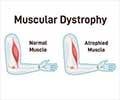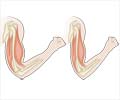- Bilateral leg pain and unilateral calf atrophy caused by polymyositis accompanying lumbar spinal stenosis and disc herniation: a case report - (https://www.ncbi.nlm.nih.gov/pmc/articles/PMC8733374/)
About
Muscle atrophy in the legs is a condition that can significantly impact mobility and overall quality of life. Whether due to disuse, injury, or neurological issues, the wasting away of leg muscles poses challenges that individuals strive to overcome. In this article, we delve into the specifics of calf muscle atrophy in one leg, shedding light on its causes and potential implications.
The Dynamics of Leg Muscle Atrophy
Leg muscle atrophy is often a consequence of reduced physical activity, aging, or underlying medical conditions. When muscles aren't regularly engaged, they weaken and decrease in size, affecting strength and function. Understanding the root cause is crucial for devising effective interventions.
Calf Muscle Atrophy in One Leg: A Unilateral Challenge
Calf muscle atrophy in one leg presents a unique set of challenges. Whether resulting from injury, nerve damage, or localized issues, the asymmetry can lead to imbalances in gait and posture. Individuals may notice a visible difference in the size and strength of their calf muscles, affecting their ability to bear weight on the affected leg(1✔ ✔Trusted Source
Bilateral leg pain and unilateral calf atrophy caused by polymyositis accompanying lumbar spinal stenosis and disc herniation: a case report
Go to source).
Unilateral calf muscle atrophy can be attributed to various factors, including nerve compression, trauma, vascular issues, or specific muscle disorders. Identifying the precise cause is crucial for tailoring targeted treatment plans. Consultation with a healthcare professional and diagnostic tests may be necessary to determine the underlying issue.
Managing calf muscle atrophy involves a multifaceted approach. Physical therapy, targeted exercises, and rehabilitation are common strategies to promote muscle growth and functional recovery. Additionally, addressing the root cause, such as resolving nerve compression or managing underlying medical conditions, is essential for long-term success.
Muscle atrophy in the legs, particularly unilateral calf muscle atrophy, underscores the importance of individualized care and targeted interventions. As we unravel the complexities of muscle health, early detection, and a comprehensive approach to rehabilitation can make a significant difference in restoring strength and function to affected legs, empowering individuals to navigate life with enhanced mobility and confidence.











